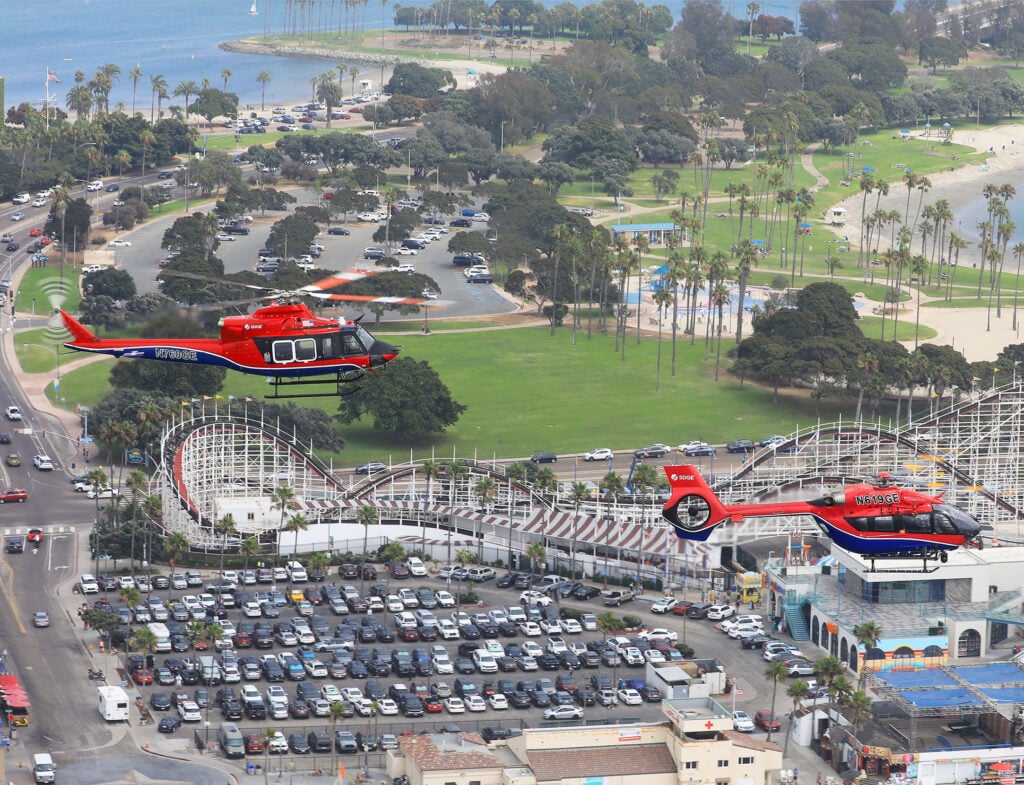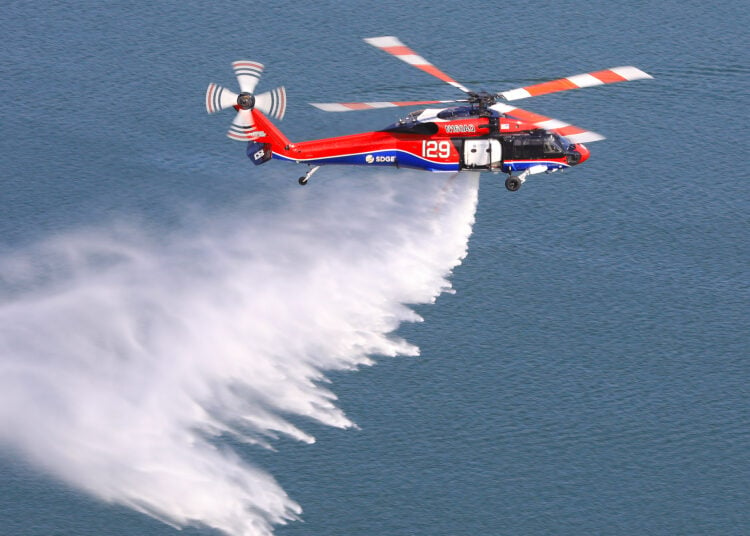Story by Ryan Mason, Images by Ryan Mason and Jeff Serpa
San Diego Gas & Electric Company (SDG&E) is primarily an investor-owned energy provider to the citizens of the greater San Diego area; however, SDG&E is particularly unique from many other public and private utility providers in one area: aerial firefighting capability.
While several other providers in the state of California have aviation assets to assist their operations, SDG&E has gone the extra mile to provide a robust and comprehensive aerial firefighting fleet that now numbers two dedicated aircraft and two call-when-needed aircraft that provide aerial firefighting capabilities 24 hours a day 365 days a year.

Inception
SDG&E's growth into the aviation world and provision of aerial firefighting capability was gradual, starting in 2010 with the inception of the $1.9 billion Sunrise Powerlink project. The Sunrise Powerlink project involved the development of a 117-mile (188 km) long 230/500-kilovolt power line, bringing 1,000 megawatts of renewable energy from the Imperial Valley to San Diego County.
The project took more than two years to complete and required the support of dozens of helicopters and flying crews to set poles and stringing lines in remote and inaccessible areas, totaling more than 30,000 flight hours by its completion.
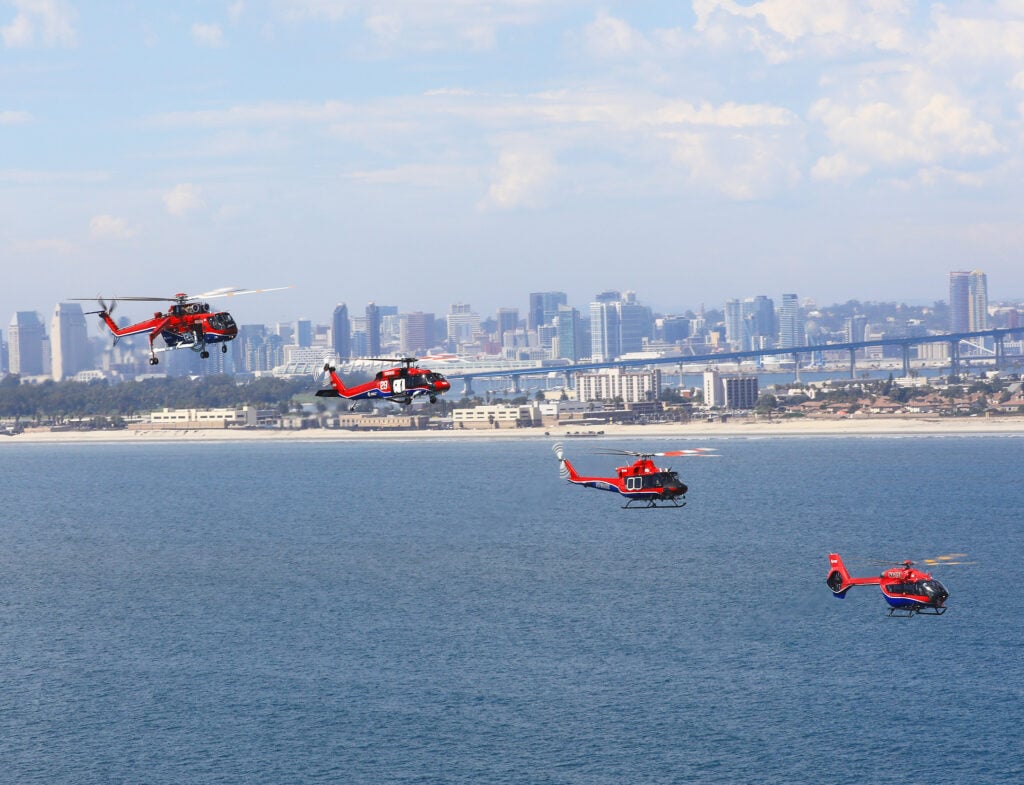
"Even after sunrise, there were still helicopters flying for us. So, we've always had helicopters come and go; however, they were never really organized. It was helicopter vendors we were using. We would bring them in for whatever task, such as setting poles or moving generators. So, we realized we needed a safety management system. And that was the ultimate goal as we began Aviation Services." said Tom Fries, the Aviation Services Manager for SDG&E.
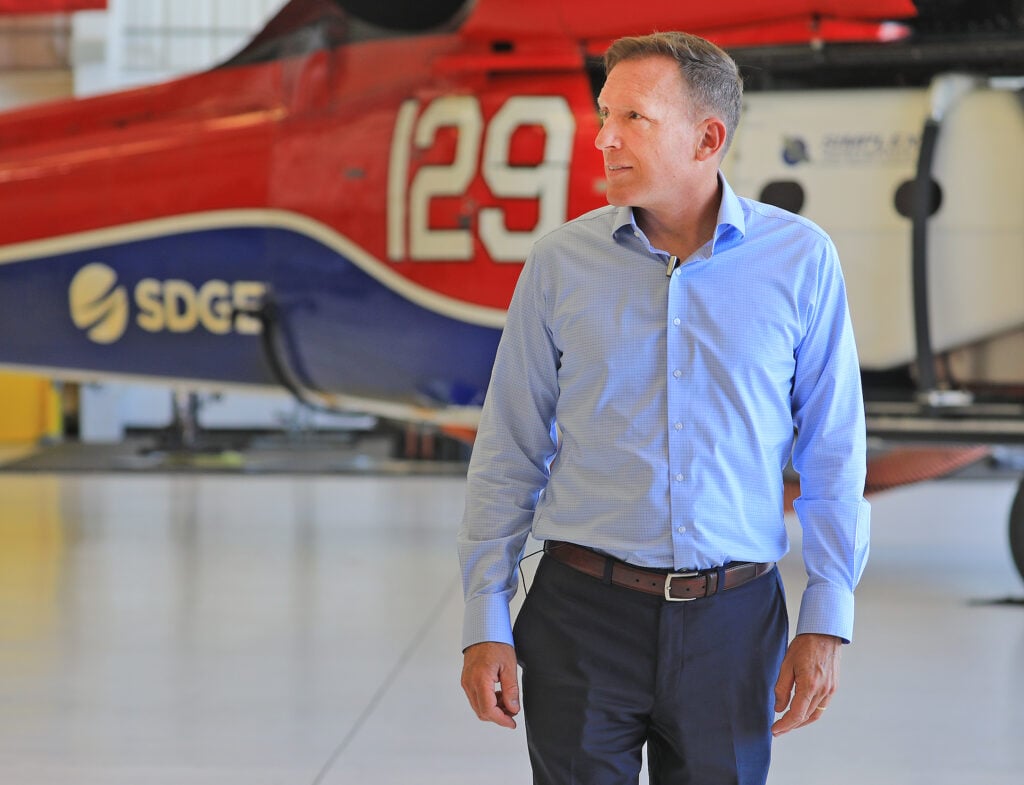
As the aviation services department of SDG&E grew over the years, the company also matured its safety management system to manage contractors that provided assets to SDG&E, formulating an auditing process and an aviation services manual with policies and procedures established to hold operators including contractors that provide aerial assets, crews and maintenance for the company accountable for the safe operation of their aircraft while working for SDG&E.
While Fries states that SDG&E can be a more complex company to work for based on what SDG&E expects from its aviation subcontractors, he states that it comes from a desire to have the safest aviation services department in the business dedicated to the safety of the operators, their aircraft, and the community.
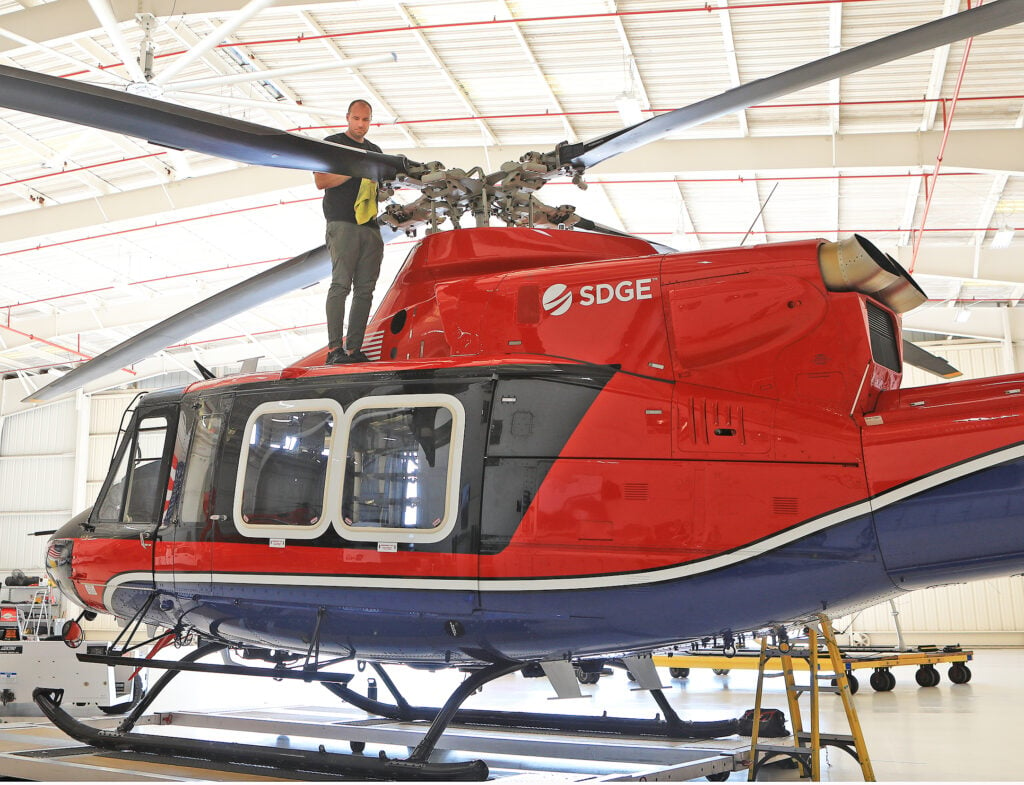
Operations
Initial operations for the department started with using contracted aircraft that would be brought in for each job, which was eventually realized to be a costly endeavor, leading SDG&E to source exclusive use helicopters that were dedicated for the primary use of SDG&E and not subject to not being available because they were on other work for an operator.
Fries likens a lot of the work the department does outside of the aerial firefighting space to "painting the Golden Gate Bridge." because federal compliance and safety regulations require that lines are checked periodically. With the thousands of miles of lines and many substations, the work, once completed, much like painting a bridge, needs to start over immediately.

SDG&E's aviation services department, through the years, has seen the value of obtaining their own assets from a cost perspective, having now invested in two purchased aerial assets, currently owning an Airbus H145, and their newest asset, the first Bell 412EPX in operation in the United States. Additionally, they maintain exclusive use contracts for a UH-60A Black Hawk through Helistream and an S-64 Air Crane contracted through Erickson, the latter used more on the department’s aerial firefighting capabilities.
While the Airbus Helicopters H145 and its backup leased H135 are secondary aerial firefighting assets, each aircraft is utility configured and can quickly be fitted with a Bambi Bucket for aerial firefighting operations.
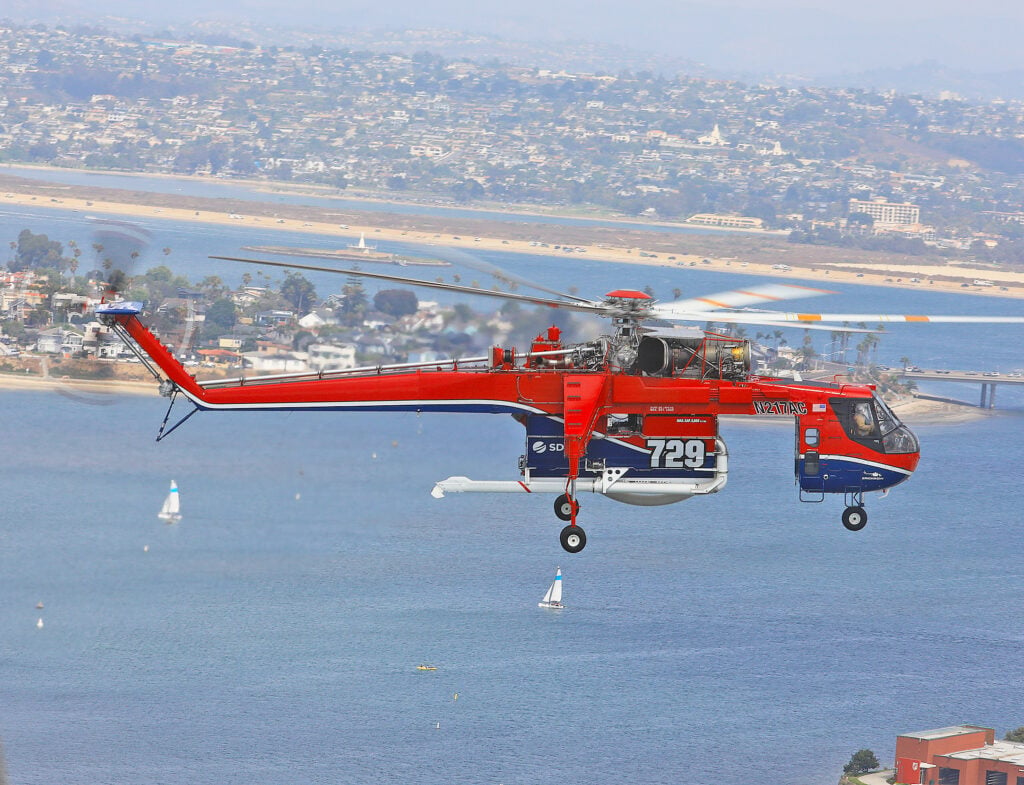
The newest asset for SDG&E, the Bell 412EPX, is capable of a Bambi bucket if needed in addition to the company's more significant type 1 asset, the Sikorsky Black Hawk, fitted with a Simplex internal tank capable of dropping 850 gallons and the Erickson Air-Crane, capable of dropping 2,650 gallons per load. The Air-Crane is also fitted with a sea snorkel, allowing that aircraft to fill while still moving at approximately 35 knots. It significantly increases the speed at which it can return to an initial attack on fires in addition to a standard snorkel filling capability, depending on the water sources available.

Firefighting Expansion
In addition to operating their fleet for powerline work and aerial firefighting, SDG&E's firefighting assets can be activated and used by CAL FIRE during wildfire response as initial attack aircraft.
"We also saw that we can participate with CAL FIRE in response to fires. Anytime there's a fire, it's going to affect our equipment. It doesn't matter how it starts. We want to be able to add assets to fight that fire from an airborne perspective. Especially in what you would consider the off-season, having an initial attack helicopter through to a type one helicopter at all times, 365 days a year, is a huge benefit," said Fries.
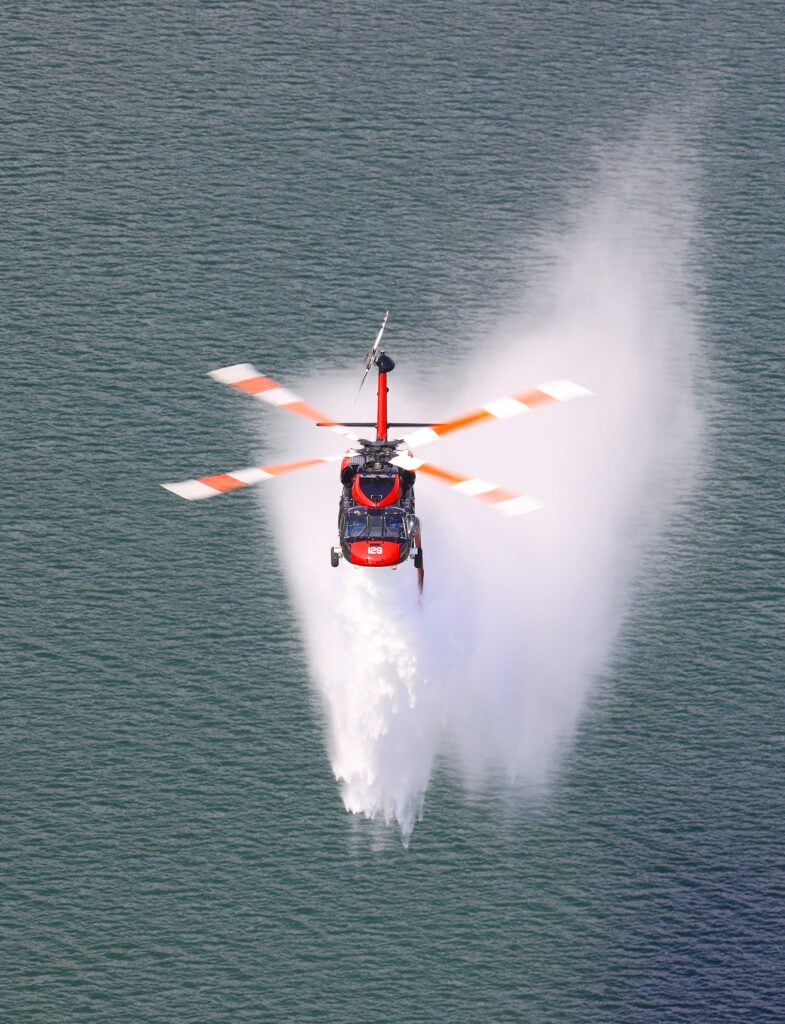
Although started in 2010, the aerial firefighting piece of the department became a year-round operation in 2017, adding the Black Hawk under a long-term contract lease in 2018 and the Air Crane in 2019 on an annual contract. However, the Air Crane is still owned and operated by Erickson. Helistream also operates an H135 and Black Hawk for the company on yearly contracts.
SDG&E continues to explore options to enhance its operations through the addition and reallocation of aerial assets.
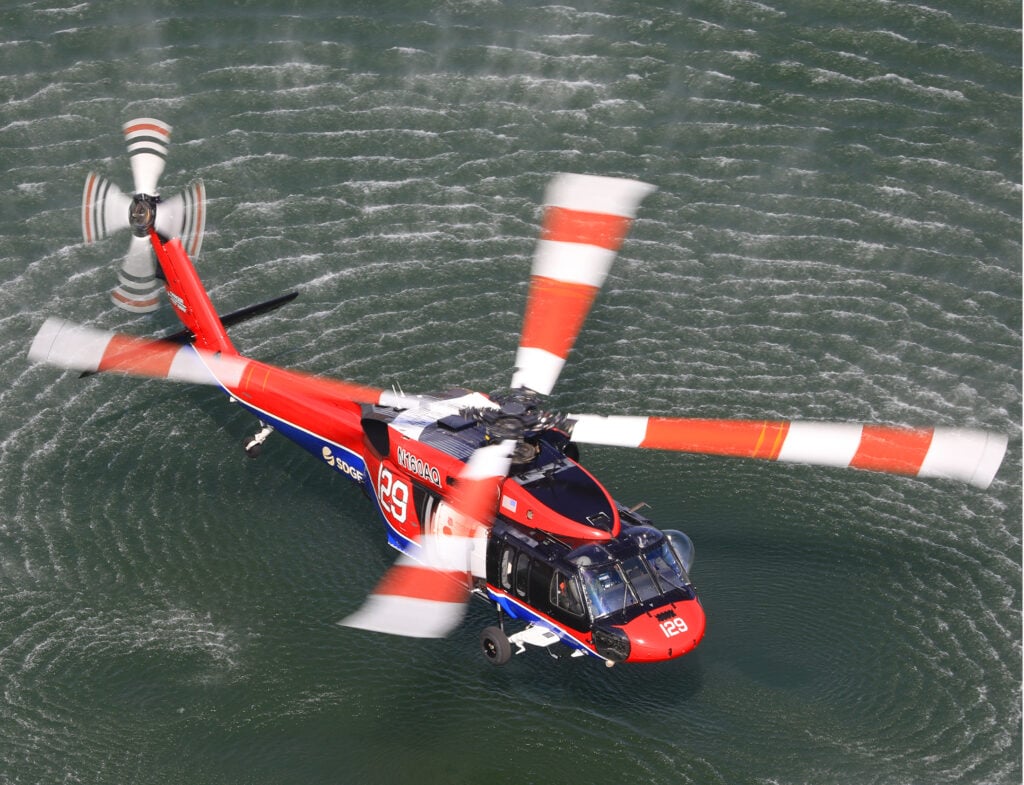
Twin Engine Safety
When commencing the Sunrise Project, SDG&E needed to rely on a fleet of different helicopters, from the MD500 to the Air-Crane; however, as the company's aviation services department has progressed in operations and utilization in the aerial firefighting world, they have come to realize the safety benefits of twin-engine operation, leading to further purchases and leases that focus almost solely on twin-engine aircraft, specifically for the safety that a dual engine aircraft offers for the protection of pilots and crew and the citizens of San Diego.

Crisis Response
SDG&E's Airbus H145 and Bell 412 EPX are winch-equipped aircraft staffed with trained crew members. Much of SDG&E’s service territory covers remote desert and mountainous terrain far removed from time critical Emergency Medical Services. The use of these crew members and winching is limited to pulling out staff or persons in imminent danger in a wildfire response or in and around a wired environment where public agency aircraft will not operate. The team provides specialized response for utility workers and not a full search and rescue capability as used by many municipal agencies in the area.

Communications Center
SDG&E maintains a state-of-the-art communications facility staffed with employees. The center aims to have at least one person per shift who tracks the operations of the multiple aircraft on locations throughout the county area when aviation assets are in the field. Aircraft are tracked throughout their daily operations, maintaining communication with center staff for safety and dispatching to multiple locations for firefighting operations and powerline work.
Training
Recognizing the importance of training in the wire environment and the aerial firefighting arena, SDG&E recently acquired a purpose-built piece of property where pilots can practice all of the real-world applications that pilots face during the year, from pole setting to aerial firefighting and tasks such as human external cargo and winching operations. As many pilots are contracted, SDG&E allows plenty of training time and aviation asset availability for staff to conduct ad-hoc training when needed if a pilot feels like they need to brush up on skills for a specific task before undertaking it in the real-world application.

Unmanned Operation
While the aerial firefighting side of the operation is a large part of the organization, UAS operations are now becoming part of daily operations in the SDG&E fleet, taking on the task of some aerial inspection operations of its infrastructure. SDG&E is exploring if and how these UAS operations can be expanded into potential firefighting support.
"We are looking at where drones can fit into firefighting. Right now, that's probably a maturing field more than anything; as you can imagine, you'll have to scale up. At this point, it's going to be helicopters that have any kind of applicable impact on fire currently."
Safety
Part of the reason that SDG&E's fleet has maintained an excellent safety record is due in large part to the culture of the operation, in what Tom Fries refers to as a 'just safety culture' where anyone has the right to decline a flight for safety concerns for any reason, much like the helicopter air ambulance industry.

"We have built a just culture. We have built an arena where anybody can say, I don't get it, stop working. Or that doesn't make sense. Why are we doing it that way? So everybody has that opportunity to say something. It may get to the 11th hour, and the pilot in command says this isn't going to work. We have the attitude of 'No harm, no foul, no flight today.' That's fine. We've had instances where we stopped work, and I've gotten calls from senior leadership, and they ask why. And as soon as it's mentioned that it's a safety thing, there's no further questions. The company fully understands that. I think that's a great environment, and that safety culture, our aviation safety management system, and those we bring in fit into that safety culture. We are all talking the same language," said Fries.

Conclusion
Throughout SDG&E's annual operations, the company flies approximately four thousand hours across four platforms split between aerial firefighting and powerline work that add significant benefits to the residents of San Diego County the company’s service territory. SDG&E has gone above and beyond in the protection of the citizens it serves, dedicating millions of dollars of budget to develop an aviation services department unlike any other in the world that works daily to provide not only life and property protection through aerial firefighting but a safe and robust program that is ready to act at any time to protect its citizens, property, and infrastructure.
